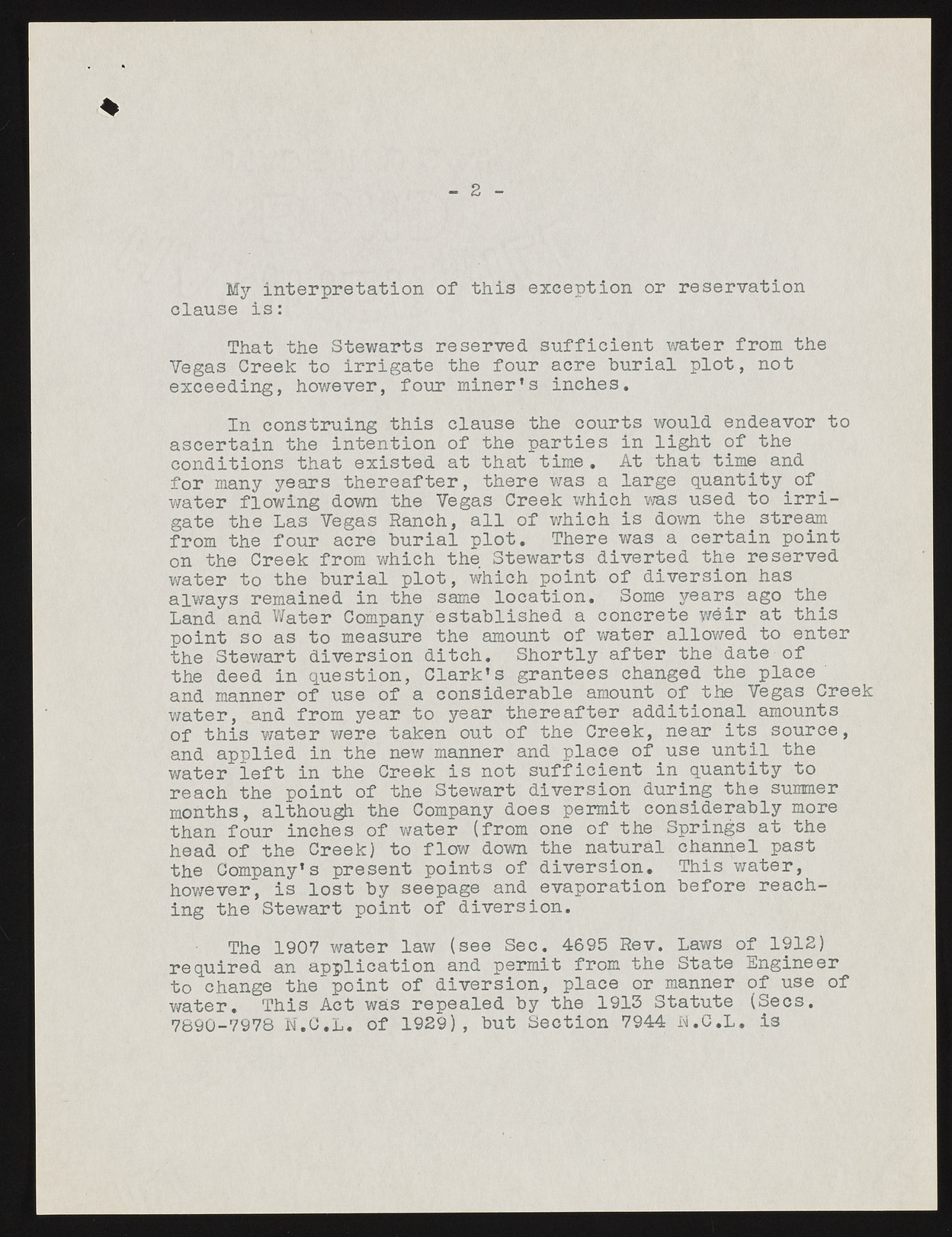Copyright & Fair-use Agreement
UNLV Special Collections provides copies of materials to facilitate private study, scholarship, or research. Material not in the public domain may be used according to fair use of copyrighted materials as defined by copyright law. Please cite us.
Please note that UNLV may not own the copyright to these materials and cannot provide permission to publish or distribute materials when UNLV is not the copyright holder. The user is solely responsible for determining the copyright status of materials and obtaining permission to use material from the copyright holder and for determining whether any permissions relating to any other rights are necessary for the intended use, and for obtaining all required permissions beyond that allowed by fair use.
Read more about our reproduction and use policy.
I agree.Information
Digital ID
Permalink
Details
Member of
More Info
Rights
Digital Provenance
Publisher
Transcription
% - 2 - My interpretation of this exception or reservation clause is: That the Stewarts reserved sufficient water from the Yegas Creek to irrigate the four acre burial plot, not exceeding, however, four miner’s inches. In construing this clause the courts would endeavor to ascertain the intention of the parties in light of the conditions that existed at that time . At that time and for many years thereafter, there was a large quantity of water flowing down the Yegas Creek which was used to irrigate the Las Yegas Ranch, all of which is down the stream from the four acre burial plot. There was a certain point on the Creek from which the Stewarts diverted the reserved water to the burial plot, which point of diversion has always remained in the same location. Some years ago the Land and Water Company established a concrete weir at this point so as to measure the amount of water allowed to enter the Stewart diversion ditch. Shortly after the date of the deed in question, Clark’s grantees changed the place and manner of use of a considerable amount of the Yegas Creek water, and from year to year thereafter additional amounts of this water were taken out of the Creek, near its source, and applied in the new manner and place of use until the water left in the Creek is not sufficient in quantity to reach the point of the Stewart diversion during the summer months, although the Company does permit considerably more than four inches of water (from one of the Springs at the head of the Creek) to flow down the natural channel past the Company’s present points of diversion. This water, however, is lost by seepage and evaporation before reaching the Stewart point of diversion. The 1907 water law (see Sec. 4695 Rev. Laws of 1912) required an application and permit from the State Engineer to change the point of diversion, place or manner of use of water. This Act was repealed by the 1913 Statute (Secs. 7890-7978 N.C.L. of 1929) , but Section 7944 N.C.L. is

